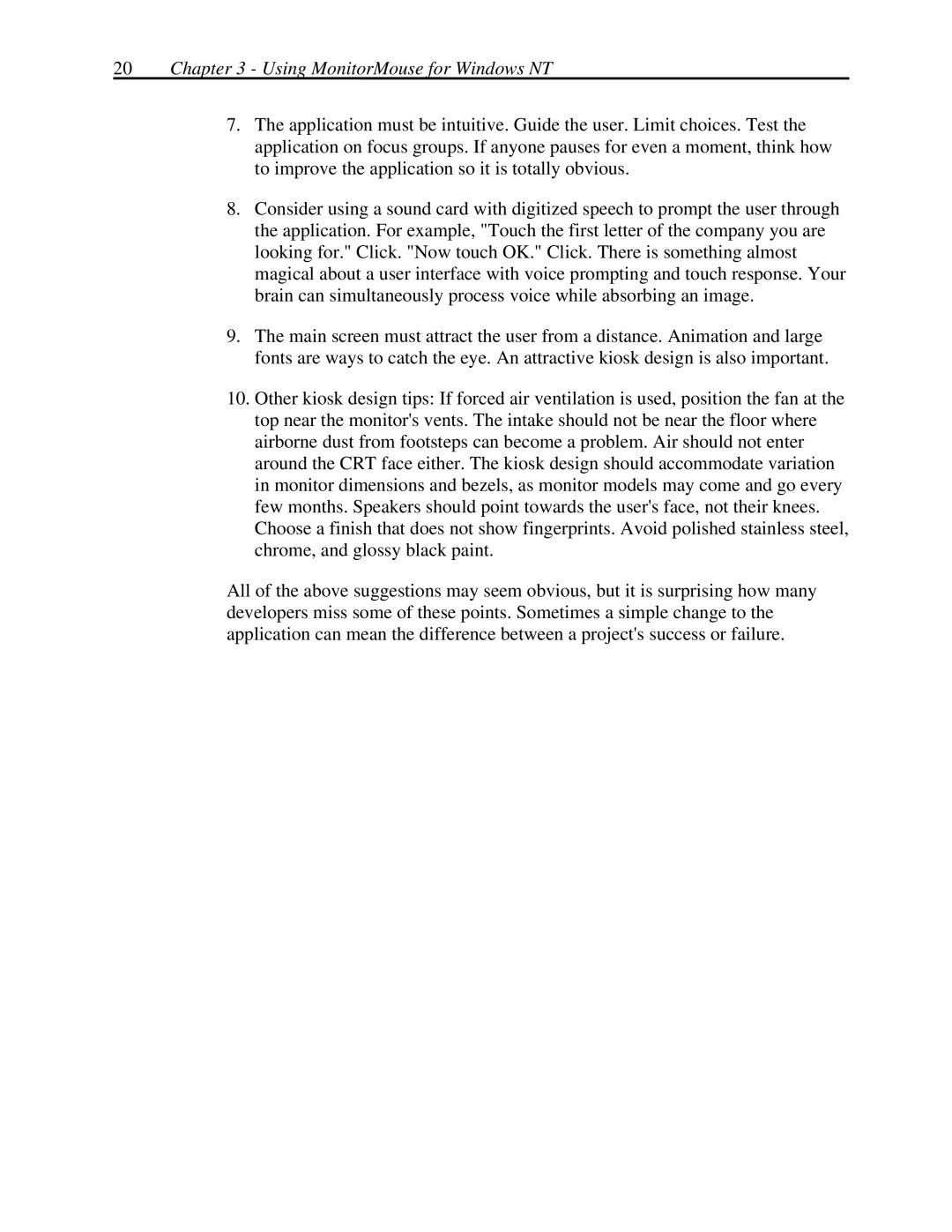20Chapter 3 - Using MonitorMouse for Windows NT
7.The application must be intuitive. Guide the user. Limit choices. Test the application on focus groups. If anyone pauses for even a moment, think how to improve the application so it is totally obvious.
8.Consider using a sound card with digitized speech to prompt the user through the application. For example, "Touch the first letter of the company you are looking for." Click. "Now touch OK." Click. There is something almost magical about a user interface with voice prompting and touch response. Your brain can simultaneously process voice while absorbing an image.
9.The main screen must attract the user from a distance. Animation and large fonts are ways to catch the eye. An attractive kiosk design is also important.
10.Other kiosk design tips: If forced air ventilation is used, position the fan at the top near the monitor's vents. The intake should not be near the floor where airborne dust from footsteps can become a problem. Air should not enter around the CRT face either. The kiosk design should accommodate variation in monitor dimensions and bezels, as monitor models may come and go every few months. Speakers should point towards the user's face, not their knees. Choose a finish that does not show fingerprints. Avoid polished stainless steel, chrome, and glossy black paint.
All of the above suggestions may seem obvious, but it is surprising how many developers miss some of these points. Sometimes a simple change to the application can mean the difference between a project's success or failure.
